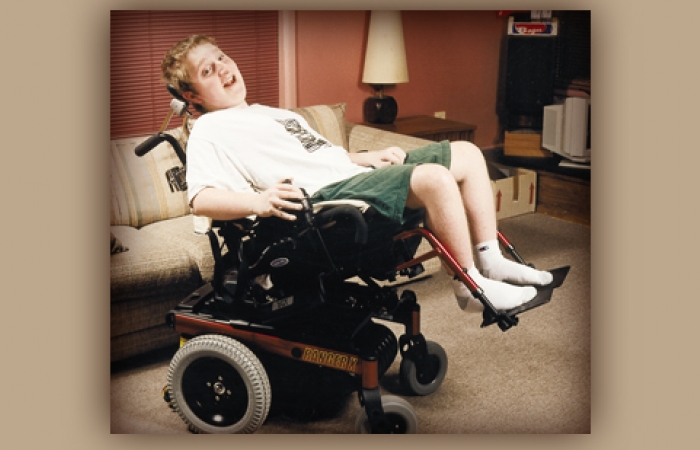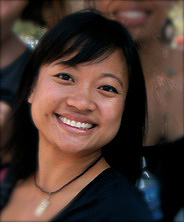
Adapting to Change After Spinal Surgery

A physical therapist discusses changes in equipment and activities that spine-straightening surgery will likely require
Tina Duong, a physical therapist at Children's National Medical Center in Washington, D.C., sees many children with neuromuscular disorders who undergo spine-straightening surgery.
 "From a rehabilitation standpoint, it would be really helpful if surgeons had a physical therapist or other rehabilitation specialist discuss with parents anticipated changes to their child’s movement and ability and need for adaptive equipment," she notes.
"From a rehabilitation standpoint, it would be really helpful if surgeons had a physical therapist or other rehabilitation specialist discuss with parents anticipated changes to their child’s movement and ability and need for adaptive equipment," she notes.
"The shape of the body and the height of the child will change," Duong says, which may require changes in equipment and approaches to daily activities. In addition, special precautions to protect the spine may be required in the immediate postoperative period.
Long before surgery
Duong suggests that some of the planning be done well before the surgical procedure. (For more on surgery to straighten the growing spine, see In Focus: Straightening the Growing Spine.)
Sometimes, such planning can even affect the procedure itself.
For example, many children with spinal curvatures flex their trunk forward in order to feed themselves, a maneuver that probably won't be possible after spine-straightening surgery.
Parents may want to ask the surgeon to discuss with a rehabilitation professional — a physical therapist, occupational therapist, or physical medicine and rehabilitation physician — the possibility of building a little bit of forward curvature into the spine so that a child can maintain self-feeding ability.
"There's a balance between what's perfect orthopedically and what's functional," Duong says. There may, however, be technical or medical reasons not to do this in some circumstances.
Emotional well-being shouldn't be overlooked either, Duong cautions. "The surgery can be a big milestone in a family's life," she says. "That's what I've seen in the clinic. In the eyes of the parents, it's another milestone of the disease progression that they've hit. Kids may be very afraid. Parents are very anxious. We do a lot of explanation as to why it's needed. Allowing parents and the child to ask questions helps relieve the fear that comes along with surgery."
As surgery approaches
As the surgery date approaches, Duong says, "there should be an in-depth discussion among all the team members, including the orthopedic surgeon, rehabilitation specialist, pulmonologist or respiratory therapist, and family to ensure that there is a thorough understanding of the patient’s motor and respiratory function and appropriate management of expectations.” Pulmonary function testing should be done before and after surgery, with recommendations made for respiratory care before and after the procedure.
New equipment may be needed, but families should avoid rushing into large purchases and should consult with a rehab professional, Duong says. "Every household is a little bit different, and every family has unique needs," she notes, "and so is what they need to suit their way of living."
Performing a thorough assessment of the home environment and the family’s needs and desires can prevent the purchase of expensive equipment that doesn't get used. "You don't want a [patient] lift that will become a $25,000 coat rack."
Immediately after surgery
A rehabilitation professional should be present the first time a child is mobilized after the procedure, to confirm or modify what has been planned and ensure that the family knows how to take appropriate precautions to protect the spine, Duong says.
Before the child leaves the hospital, the rehab professional also can address respiratory and toileting issues, and help develop a stretching program.
Specific modifications
Some equipment and activities may need adjustment after surgery.
- Wheelchair: Children may be taller after surgery and may sit differently, requiring modifications to the wheelchair. Head control may change, and more support for the head may be required. The child and parents may need to relearn how to adjust a child's position to decrease pressure on some parts of the body. A tilt-in-space chair may be required to help relieve pressure on various parts of the body. The rehab professional should ensure that the wheelchair seat and back are adjusted to an appropriate level, evaluate how a custom-molded back needs refitting after surgery, and decide whether more trunk support is needed.
- Bed: The child's bed should have a firm surface. A waterbed, for instance, is not firm enough. The bed should be high enough so that it's convenient for the caregiver and safe for transfers.
- Additional adaptive equipment: With the help of a rehab professional, consider various adaptive devices for use in the home in the weeks immediately after surgery (and possibly longer), so that the child can function safely and comfortably in the environment. Specifically, you may want to consider purchasing, borrowing or renting a hospital bed, shower chair, toilet lift, bedside commode, walker and reacher. Safety and convenience in the bathroom may require a bath chair, lift or grab bars.
- Car: If the child's height is different after surgery, he or she may not fit in a car or van the same way, and modifications may be needed. The child may need to sit in the front seat so that the seat angle can be adjusted.
- Back brace: If it's recommended that a child continue to wear a back brace after surgery, the brace will need to be changed in light of the new body contours.
- Eating and drinking: The ability to self-feed may change if a child can no longer bend forward as he or she did before the surgery. With the help of a rehab professional, consider an adaptive feeding device or provision of elbow support so that a child can bring a hand to the mouth. Provide straws for drinking.
- Transfers: Parents may need to learn different ways to transfer a child to and from the wheelchair or other vehicle after surgery. Parents should talk to their rehab professional about any precautions that must be taken after surgery and about appropriate devices to help with transfers.
- School: A child's individualized education program (IEP) may need to be updated to reflect the expected post-surgery changes. The child may move differently and may need re-evaluation by the school’s physical and/or occupational therapist. Prior to surgery, parents should make sure the school can transition the child back into the classroom, including making any required modifications in equipment or activities.
MDA Resource Center: We’re Here For You
Our trained specialists are here to provide one-on-one support for every part of your journey. Send a message below or call us at 1-833-ASK-MDA1 (1-833-275-6321). If you live outside the U.S., we may be able to connect you to muscular dystrophy groups in your area, but MDA programs are only available in the U.S.
Request Information